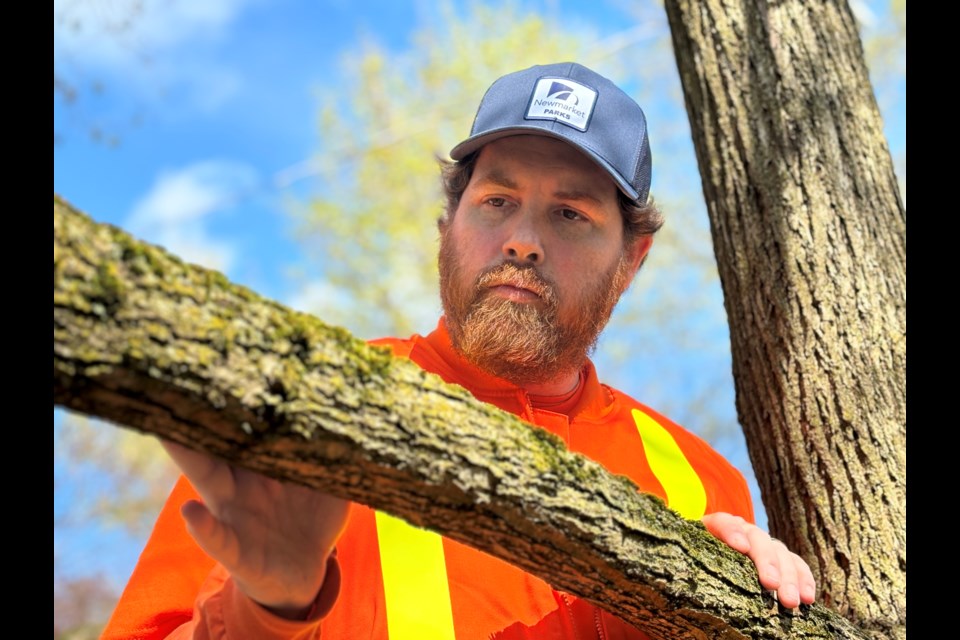You may have noticed this year that a lot of trees in Newmarket are covered in green moss — and it's actually a good thing, experts say.
Moss thrives in moist, shady conditions, absorbing nutrients and water directly into its cells. Trees that aren't exposed to as much sunlight or are growing in damp, cloudy climates — which is the kind of weather we've been having — are more susceptible to having moss on them.
As greenhouse gases like carbon dioxide warm the Earth, plant life can play a crucial role in the fight against climate change.
According to the National Library of Medicine, the moss on trees — like you've been seeing on the Tom Taylor Trail and at Fairy Lake — reduces carbon dioxide emissions by fostering carbon sequestration.
"Mosses and lichens provide an important service to the environment by absorbing carbon and pollutants from the air," said Joerg Hettmann, supervisor of forestry, parks, and facility services with the Town of Newmarket. "Lichens, on the other hand, are intolerant to pollutants, and their presence indicates healthy air.
"The town found both mosses and lichens on the trees along the boardwalk, which should indicate a healthy state of the area."
Moss and lichen are found on trees and rocks. While they are similar, they are different. According to the Canadian Museum of Nature, moss is a simple plant, and lichen is a fungi-algae sandwich.
Mosses are multicellular organisms with leaflets made of photosynthetic cells, just like trees, ferns, and wildflowers. Lichens, conversely, are a mix of at least two different organisms, a fungus, and an alga, living together as one.
"While walking the boardwalk along Fairy Lake, you will find mosses growing on the wooden path, fallen logs, and live trees," said Hettmann. "The presence of moss can generally indicate a moist environment. Lichens, which often look very similar to mosses, can also grow in dry areas, such as rocks, but are sensitive to pollutants. Lichens are not typically found in a dense urban environment."
According to the Government of Canada, there are more than 10,000 moss species in the world, of which about 1006 have been identified in Canada.
Moss can be found in parks and trails, but it can also sometimes be found on buildings and houses that offer some shade from the sun.
"There are many places in the urban environment where moss can thrive," said Angie Hutnick, program manager for urban forestry at York Region. "Moss prefers cool shaded areas as it needs consistent moisture to grow. This can include places like north-facing walls, street tree bark, or flower beds."
Mosses and lichens can benefit the environment by providing food, shelter, habitat, and building materials for animals such as deer, birds, squirrels, and mice. It can also protect trees from extreme weather, such as rain, wind, and snow.
"Mosses are an integral part of the natural environment," said Hettmann. "However, their presence does indicate a moist environment, usually in shady areas. While the moss generally uses buildings as a surface to grow on, removing them from buildings is generally a good maintenance practice."
"Moss is a unique plant," said Hutnick. "Instead of roots, moss has small anchor structures called rhizoids, which attach to surfaces like soil, rocks, or the sides of buildings. Rhizoids do not absorb water and nutrients. They are absorbed through its surface. Moss does not reproduce by seeds or flowers, it reproduces through spores which travel by wind."
Mosses can also reproduce asexually, where the parent creates a genetic clone of itself.

